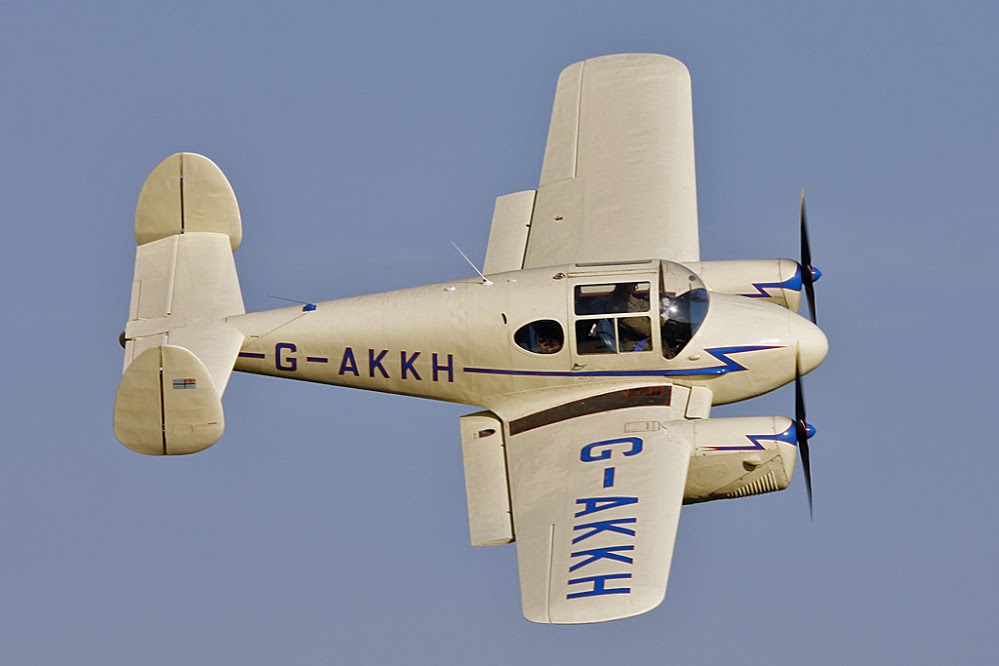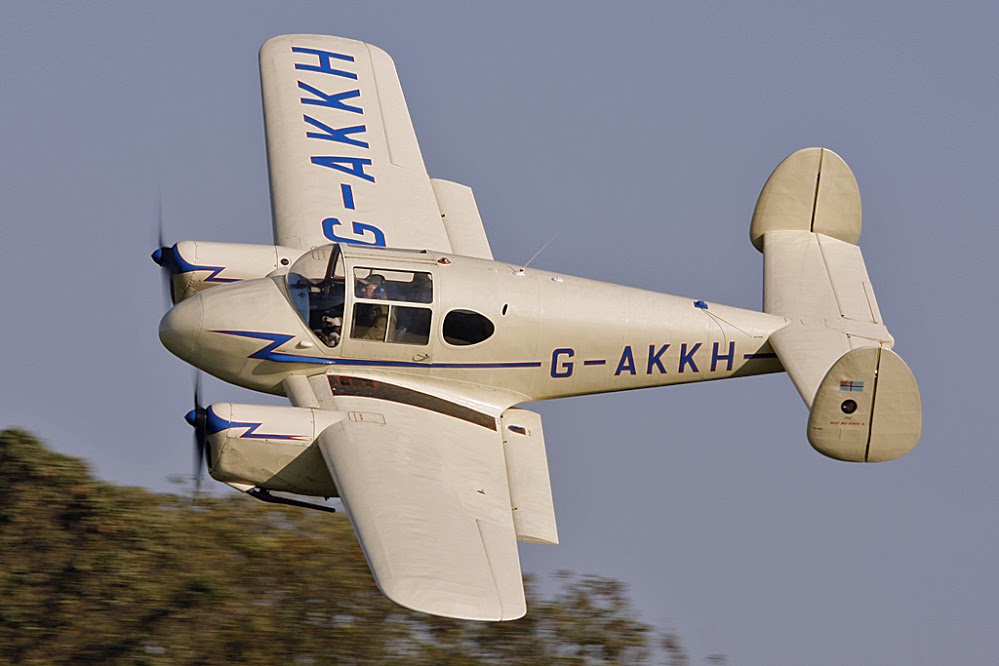Plane of the something #10: Miles Gemini
First off, apologies for being very late. Things have been a bit busy over here. Now on to business, thank you Ozzy for the wonderful suggestion!
I can think of no better way to introduce the reader of this to the Gemini than with this beautiful video of a preserved Gemini:
http://www.youtube.com/watch?v=ToV62V5XaGE
The Gemini is yet another aircraft I had no idea ever existed despite all my attempts
to the contrary previous to the suggestion by Ozzy. Like the Great Lakes, now that I know of it, I feel foolish never having known of such a wonderful little plane!
http://www.digplanet.com/wiki/Miles_Gemini
The Miles Gemini is supposed to be a light touring twin for about 4 people. It was equipped with rather tiny engines, a huge green-house like cockpit, as well as high lift devices.
More importantly, the Gemini is another one of those aircraft that is historically significant. Not because of commercial success but rather because it was the last production aircraft produced by Miles and one of the first pure civil designs built after WW2. Miles having been another one of those classic aircraft manufacturers that sadly went the way of the dodo thus the Gemini represents the end of the Golden Age of the aero industry in Britain.
However, it also represents the start of peace and rebuilding. WW2 was the most devastating conflict in human history, aircraft being a major source of this devastation. Considering the Gemini's first flight was just a few MONTHS after VJ Day and the official end of the war, the Gemini represents an extremely abrupt change of an aero company from war to peace. Too me at least, it gives the Gemini a special place in the records of aviation history as one of the
first peaceful designs created after the biggest war in human history.
A good forum discussion elsewhere on the interwebs covering various aspects (and nastalga) of the Gemini:
http://www.pprune.org/private-flying/28 ... emini.html
Some good original documents and photos from its hey-day to look at before I ramble on some more:
http://home.comcast.net/~aero51/html/gallery/m65.htm
Now with all that boring 'deep' jabber out of the way I draw focus to the design itself. Considering the year of its first flight, 1945, the design's construction and aerodynamics are rather PRE WW2. As the design was developed from the single engined Messenger, it is very likely that preliminary design work on this aircraft started before the end of the war albeit no doubt Miles was busy with its war commitments as every aircraft manufacturer was.
The design featured originally an engine very similar to the original engine of the Great Lakes: a dainty 90hp albeit the Gemini had 2. The aircraft was built primarily with wood, this would explain a great deal as too why there are so few left flying today as wooden aircraft require a large effort to keep flight worthy. A wood build up though can be rather light weight, as such it is my guess this was done for weight reasons as by 1945 the use of metals as the primary material was well established. A unique feature is the fixed trailing edge detached flaps. These look very much like the flaps on a Junkers Ju52 or '87 and would be just as effective. If it was not for the standard engine fitment being so weak, the Gemini would be a good short field airplane considering it had these fixed flaps and a large rectangular wing...but a lack of power complicates this issue. The power was an issue not just from weight, but also from the drag. Add the poor power loading and a fare amount of drag together and now you have a real plodding airplane. However, the sources of drag are what give the Gemini its distinctive look and endearing handling: strong, stable, spacious interior, and superb views from the cabin/cockpit. Of note too is that unlike a very similar plane, the Piper Aztec/Apache lineage, the Gemini is a tail dragger. These means that the pilot MUST PAY ATTENTION any time the engines are turning. Paying closer attention to the video provided at the beginning shows that the twin engines, high lift wings, and rather stubby layout ensure that the airplane requires attention on final and the ground roll. During the rest of the flight, it appears to be a rather gentle (albeit slow) airplane. But what do you expect from a tail dragger?! If you want a tail dragger that is a piece of cake to land and requires no special attention, then get a nose wheel!
From an engineering and design standpoint, I see great potential in the Gemini's design. With a bit more development it could have spawned a British competitor to the Piper twin line of the later Aztec/Apache (or similar machine). Like the Aztec, the Gemini was built with rather lack-luster performance but utility and comfort in mind. With a bit more power and some slight aerodynamic refinements the Gemini would likely have been a major player in the civil light twin market. But alas, Miles financial woes finally caught up and that would be the end. A quick note on the power issue, apparently many-a Gemini recieved more powerful powerplants usually still well below 200hp.
In closing, the Gemini certainly is not a glamorous airplane. Nor is it ground breaking. Nor did it have a long production run. However, the Gemini could be considered as the last of the 'classic' British vintage civil airplanes and among the first pure civil flying machines to be born post WW2. Personally, I am a huge sucker for vintage airplanes (hence the WACO pic in the signature). Therefore, I think the Gemini is spectacular. It is made of wood, has classic lines, its a tail dragger, and it lacks the boring refinments of modern design styles. In other words, its a pure classic airplane. Fingers crossed someone with real talent gets an idea to make a pack of the Gemini for FS2004/FSX!
Well folks this one was a hard bugger for me to find info on, if any of you find any other useful links or tid bits of info, as usual please share!
Until next time,
May your landings be smooth, and your beers strong!

Simviation Forums
Flight Simulator and other chat








